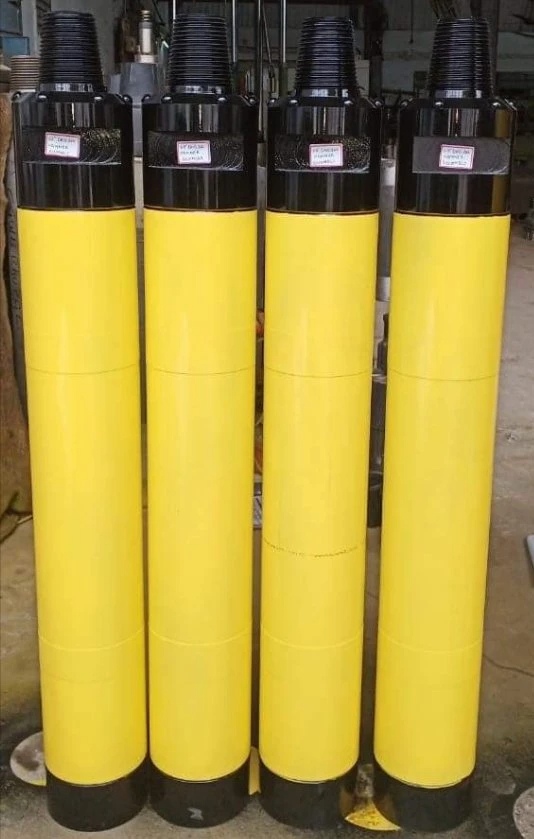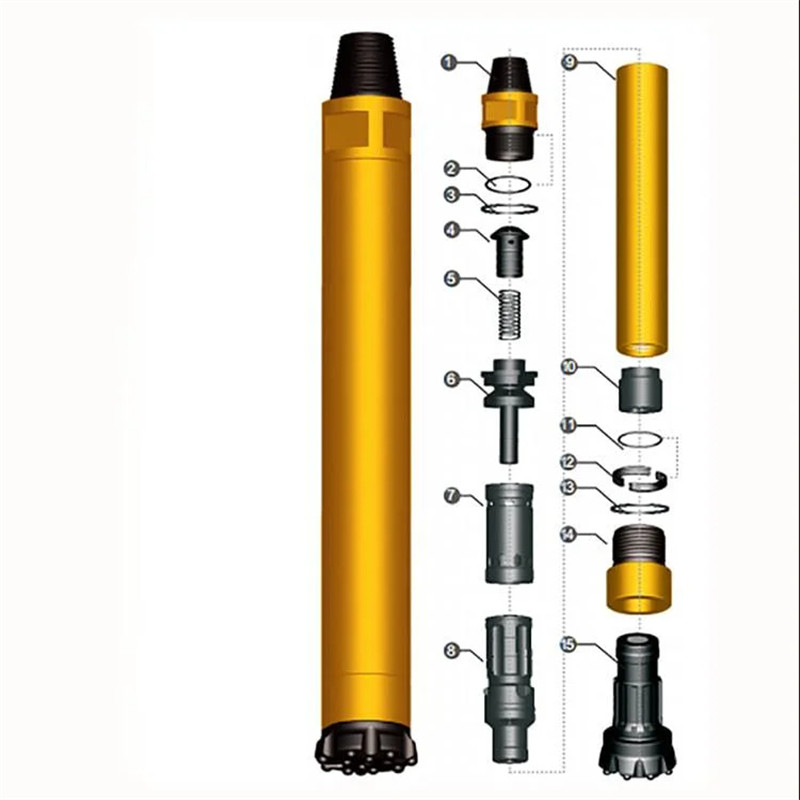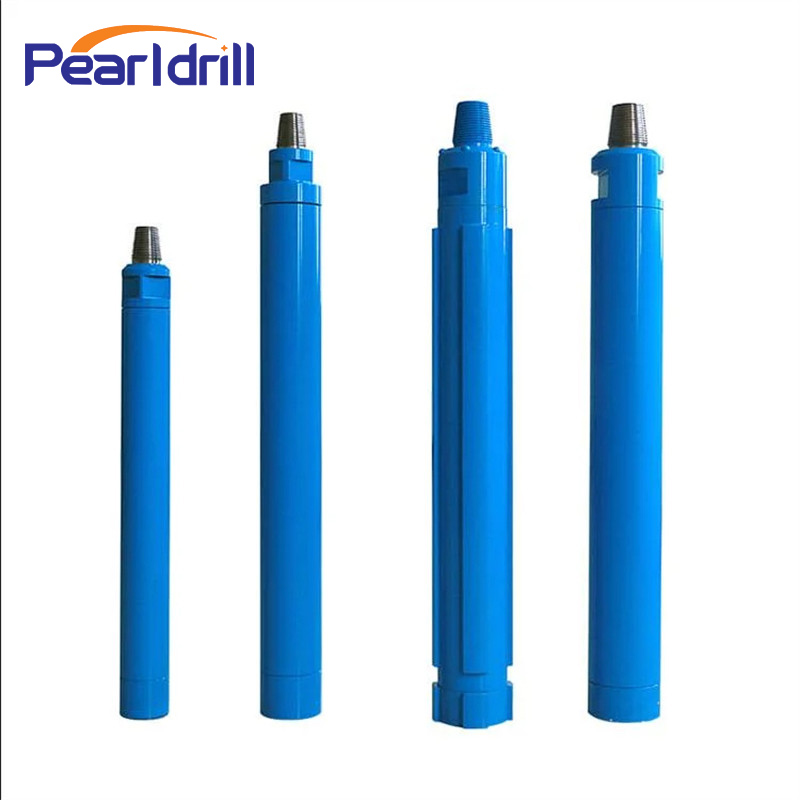What is a DTH Drilling Hammer
A DTH Drilling Hammer is a pneumatic percussion tool used in rock drilling. In DTH drilling, the hammer is located directly behind the drill bit at the bottom of the drill string inside the borehole.

1. Key Features of a DTH Drilling Hammer:
Location: Unlike top hammer drilling where the hammering mechanism is located outside the borehole at the top of the drill string, the DTH hammer travels down the hole with the drill bit.
Power Source: DTH hammers are primarily powered by compressed air. This high-pressure air serves two main purposes:
Actuation: It drives the internal piston of the hammer to strike the drill bit with a rapid succession of powerful blows.
Flushing: The exhaust air from the hammer is used to flush the rock cuttings (chips and dust) up and out of the borehole. In some cases, water or drilling mud is added to the air stream to improve cuttings removal and dust suppression.
Direct Impact: Because the hammer is directly behind the bit, the percussive energy is transferred very efficiently to the rock, minimizing energy loss in the drill string.
Drill String Function: The drill pipes (or rods) connected to the hammer transmit the necessary feed force (weight on bit) and rotation to the hammer and bit.
2. How DTH Drilling Works:
Compressed Air Supply: A powerful air compressor on the surface delivers high-pressure air through the drill string to the DTH hammer.
Hammer Action: Inside the hammer, a piston repeatedly strikes the back of the drill bit at a high frequency. This percussive action fractures the rock.
Rotation: The drill string slowly rotates the hammer and bit, ensuring that the impacts occur on a fresh surface of the rock.
Cuttings Removal: The exhaust air from the hammer blasts the broken rock cuttings away from the bit and forces them up the annulus (the space between the drill string and the borehole wall) to the surface.
Drill String Extension: As the hole deepens, more drill pipes are added to the top of the drill string.

3. Advantages of DTH Drilling:
Efficient in Hard Rock: DTH drilling is particularly effective and achieves high penetration rates in medium to very hard and abrasive rock formations.
Straighter Holes: The direct application of force behind the bit tends to produce straighter and more accurate boreholes, especially in fractured or uneven ground.
Larger Diameter Holes: DTH drilling is well-suited for drilling larger diameter holes.
Less Energy Loss: Compared to top hammer drilling in deep holes, DTH experiences less energy loss through the drill string.

Click here to talk to us if you want to know more:
China Products High Air Pressure DTH Drilling Hammer
We're here to help you get the best drilling stuff and service.


